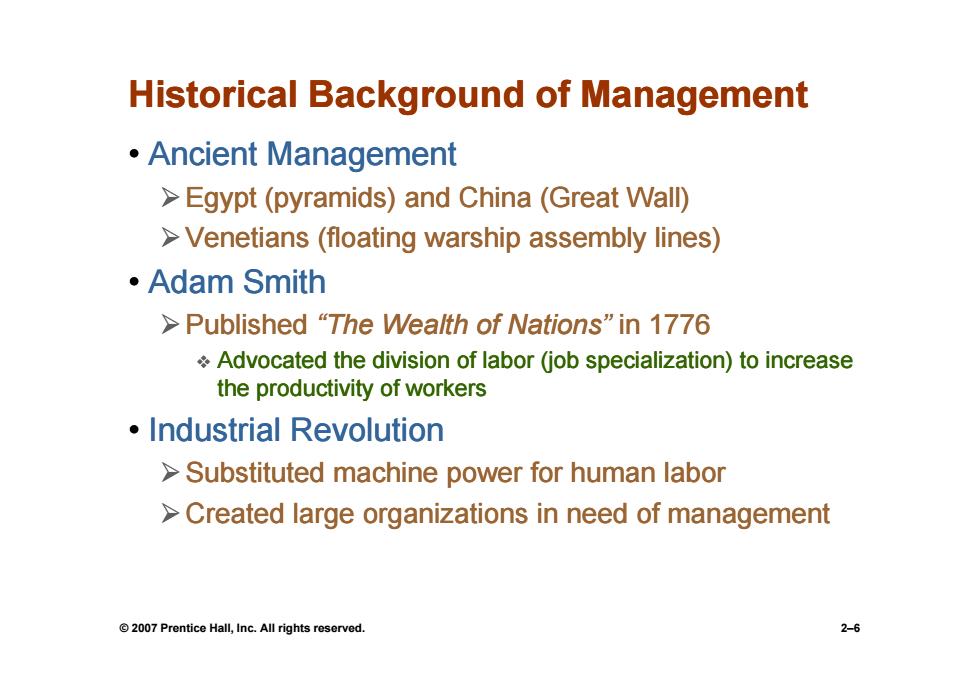
Historical Background of Management ·Ancient Management >Egypt(pyramids)and China(Great Wall) >Venetians(floating warship assembly lines) ·Adam Smith >Published "The Wealth of Nations"in 1776 Advocated the division of labor (job specialization)to increase the productivity of workers Industrial Revolution >Substituted machine power for human labor >Created large organizations in need of management 2007 Prentice Hall,Inc.All rights reserved. 2-6
Historical Backg g round of Management • Ancient Management ¾E t ( id ) d Chi (G t W ll) Egypt (pyramids) and China (Great Wall) ¾Venetians (floating warship assembly lines) • Adam Smith ¾Published “The Wealth of Nations” in 1776 Advocated the division of labor (job specialization) to increase the productivity of workers • Industrial Revolution Industrial Revolution ¾Substituted machine power for human labor ¾C dl i i i d f Created large organ arge organizations in need of management management © 2007 Prentice Hall, Inc. All rights reserved. 2–6
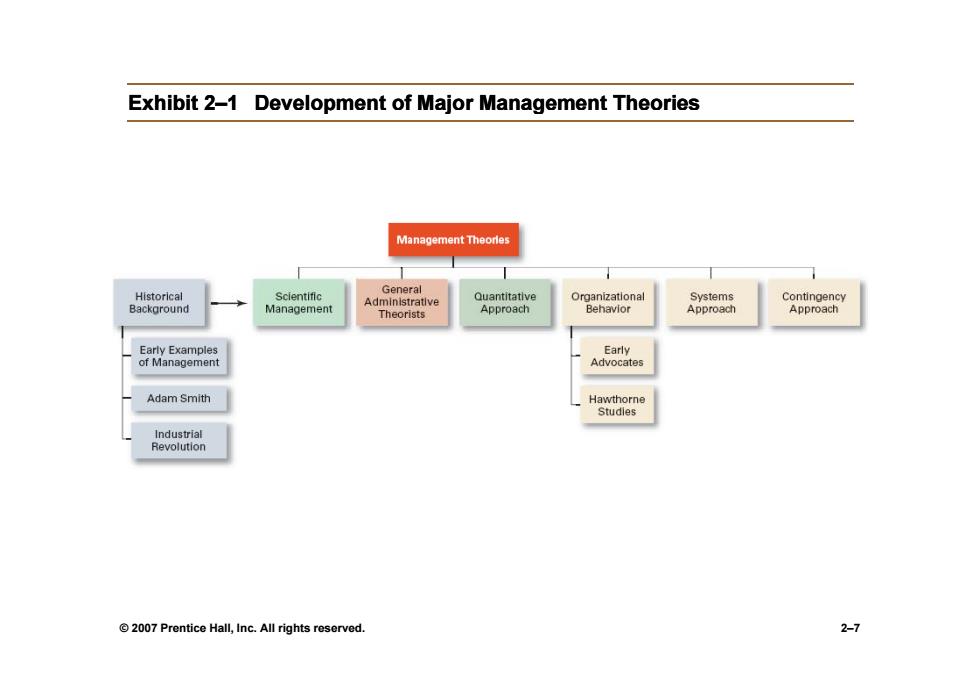
Exhibit 2-1 Development of Major Management Theories Management Theories Historical Scientific Quantitative Organizational Systems Contingency Background Management Theorists Approach Behavior Approach Approach Early Examples Early of Management Ad小vocates Adam Smith _Hawthorne Studles Industrial Revolution 2007 Prentice Hall,Inc.All rights reserved. 2-7
Exhibit 2 Exhibit 2–1 Develop jg ment of Ma ment of Major Mana or Management Theories ement Theories © 2007 Prentice Hall, Inc. All rights reserved. 2–7
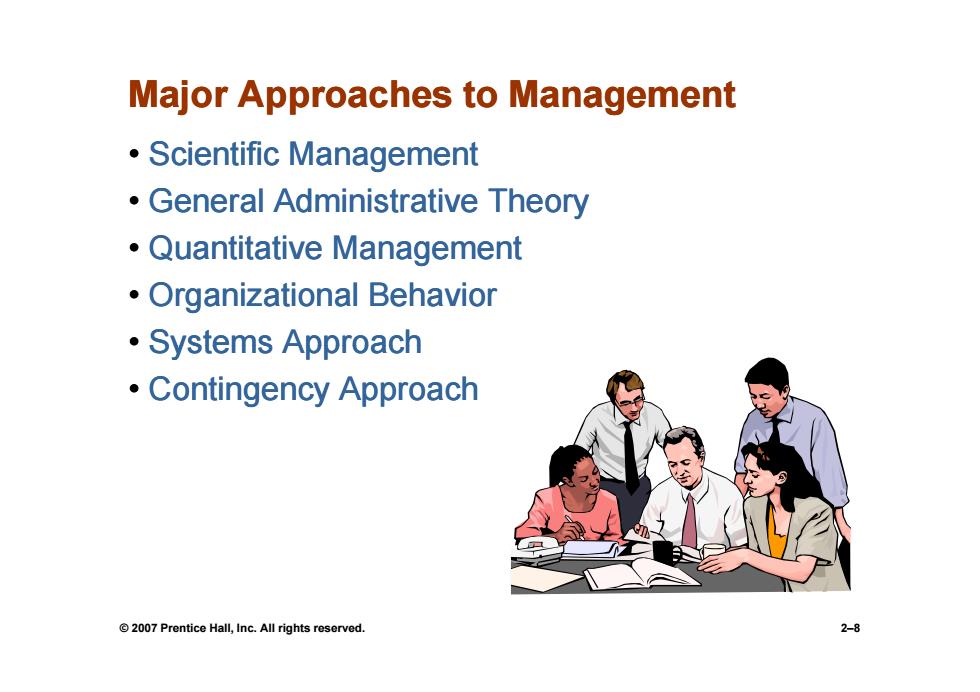
Major Approaches to Management Scientific Management General Administrative Theory Quantitative Management Organizational Behavior ·Systems Approach Contingency Approach 2007 Prentice Hall,Inc.All rights reserved. 2-8
Maj pp g or Approaches to Mana roaches to Management • Scientific Management • General Administrative Theory • Quantitative Management • Organizational Behavior • Systems Approach Systems Approach • Contingency Approach © 2007 Prentice Hall, Inc. All rights reserved. 2–8
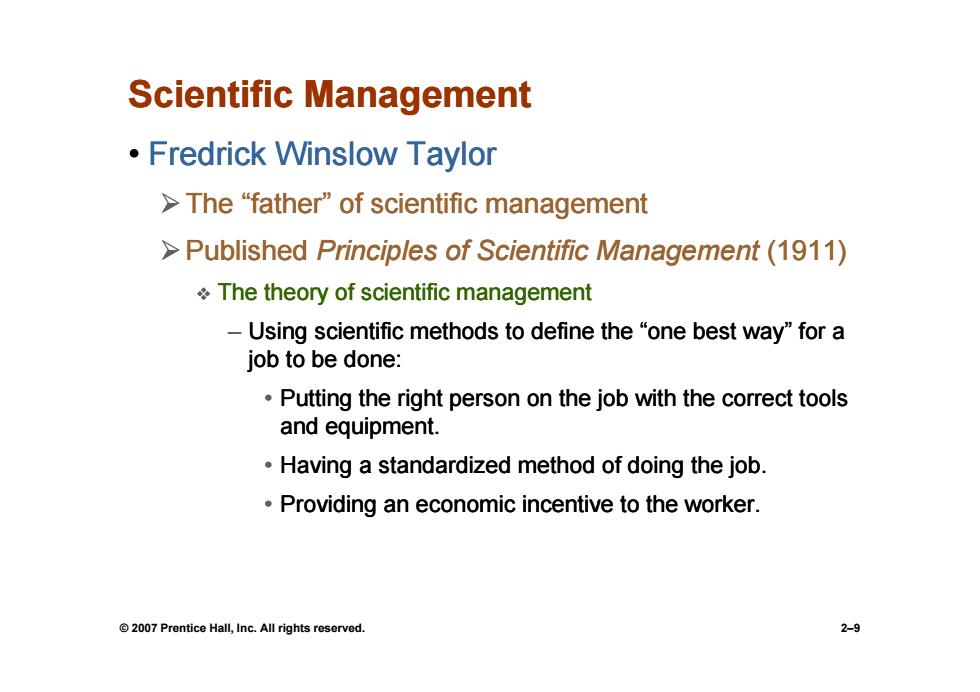
Scientific Management Fredrick Winslow Taylor >The“father'”of scientific management >Published Principles of Scientific Management (1911) The theory of scientific management -Using scientific methods to define the "one best way"for a job to be done: Putting the right person on the job with the correct tools and equipment. Having a standardized method of doing the job. Providing an economic incentive to the worker. 2007 Prentice Hall,Inc.All rights reserved. 2-9
Scientific Management • Fredrick Winslow Taylor ¾The “father” of scientific management ¾Published Principles of Scientific Management (1911) The theory of scientific management – Using scientific methods to define the “one best way” for a job to be done: • Putting the right person on the job with the correct tools and equipment and equipment. • Having a standardized method of doing the job. • Providing an economic incentive to the worker Providing Providing an economic economic incentive incentive to the worker. © 2007 Prentice Hall, Inc. All rights reserved. 2–9
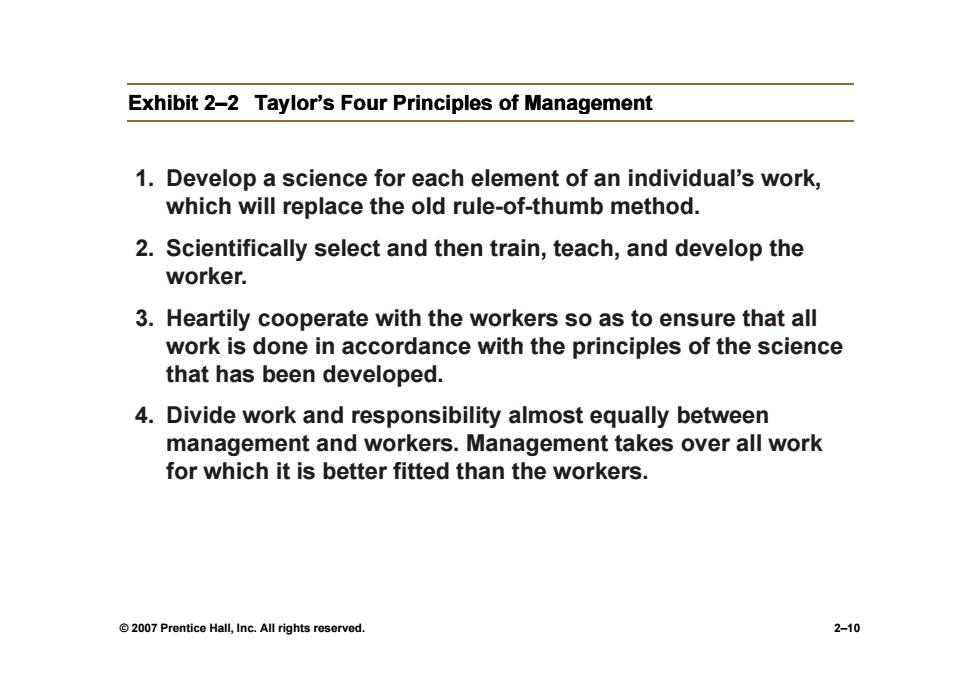
Exhibit 2-2 Taylor's Four Principles of Management 1.Develop a science for each element of an individual's work, which will replace the old rule-of-thumb method. 2.Scientifically select and then train,teach,and develop the worker. 3.Heartily cooperate with the workers so as to ensure that all work is done in accordance with the principles of the science that has been developed. 4.Divide work and responsibility almost equally between management and workers.Management takes over all work for which it is better fitted than the workers. 2007 Prentice Hall,Inc.All rights reserved. 2-10
Exhibit 2 Exhibit 2–2 Tay pg lor’s Four Princi lor’s Four Principles of Mana les of Management 1. Develop , a science for each element of an individual’s work, which will replace the old rule-of-thumb method. 2. Scientifically select and then train, teach, and develop the worker. 3. Heartily cooperate with the workers so as to ensure that all work is done in accordance with the principles of the science work is done in accordance with the principles of the science that has been developed. 4. Divide work and resp y qy onsibility almost equally between management and workers. Management takes over all work for which it is better fitted than the workers. © 2007 Prentice Hall, Inc. All rights reserved. 2–10